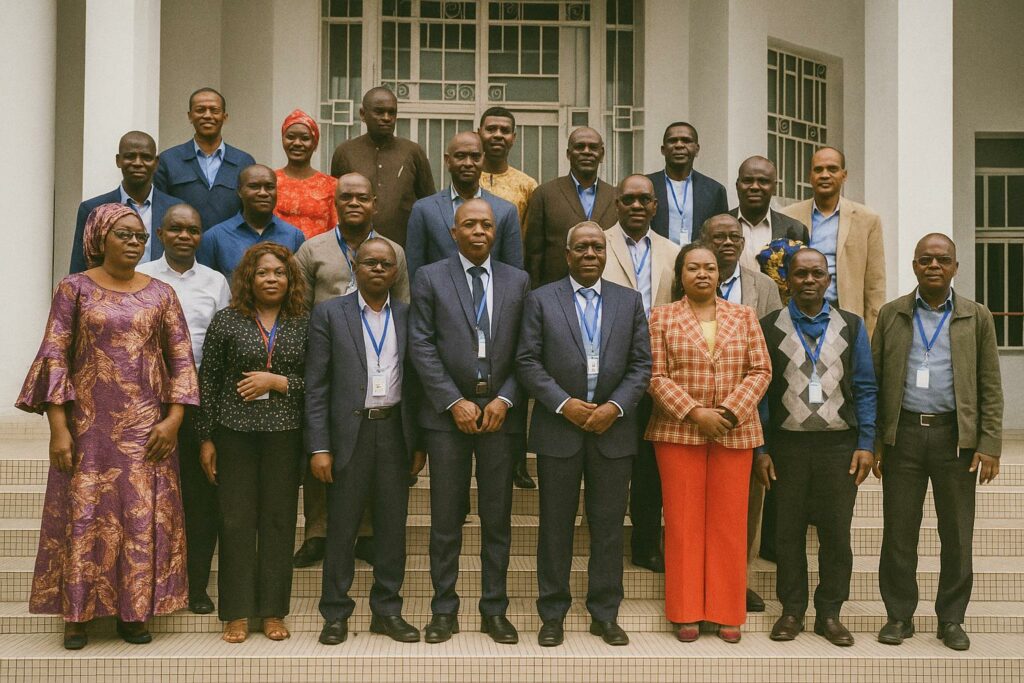Strategic Timeliness for a Vulnerable River Basin
The roar of the Congo River has long shaped the fortunes of the Republic of Congo, nourishing commerce while periodically spilling its banks in destructive floods. From 8 to 10 July, officials gathered in Brazzaville with the United Nations Development Programme to refine a national post-disaster recovery and preparedness strategy for 2025-2030. The updated document seeks to translate recent humanitarian lessons into a coherent policy architecture, reflecting the government’s stated ambition to consolidate resilience without hampering growth. According to the Ministry of Social Affairs, Solidarity and Humanitarian Action, more than 120 000 households have been struck by recurrent inundations since 2019, a figure that underscores the urgency of institutional alignment.
A Vision of Resilient Reconstruction by 2030
Brazzaville’s blueprint envisions a nation able to rebound rapidly from natural, technological or man-made shocks by the end of the decade. Officials emphasise that the text dovetails with the African Union’s Programme of Action for Disaster Risk Reduction and with the global Sendai Framework, thereby positioning Congo-Brazzaville within a multilateral consensus on recovery norms. “Our citizens must witness that every crisis can be converted into an opportunity to improve public infrastructure and social cohesion,” remarked Minister Irène Mboukou-Kimbatsa during the opening session, signalling a commitment to the “Build Back Better” ethos popularised after the 2011 Sendai meeting.
Immediate Recovery: Hospitals, Roads and Livelihoods
The first policy pillar targets swift yet sustainable reconstruction in flood-affected departments of Likouala, Sangha and Plateaux. Health centres and schools are slated for rehabilitation with cyclone-resistant roofing and solar micro-grids, measures that mirror best practices observed in Mozambique after Cyclone Idai (World Bank 2023). Road and bridge repairs will facilitate market access, while the agriculture ministry intends to distribute climate-adapted seed varieties to smallholders whose fields were submerged. In the words of UNDP Resident Representative Chris Mburu, “speed is vital, but quality is non-negotiable; if a rebuilt clinic collapses under the next storm, we have failed the Congolese taxpayer and donor alike.”
Protecting the Most Vulnerable While Greening the Response
Social protection remains integral to the draft. Female-headed households, persons with disabilities and indigenous forest communities will receive tailored cash-for-work schemes and psychosocial services designed in concert with the International Federation of Red Cross Societies. Environmental safeguards are equally prominent: reforestation of riparian zones, promotion of bamboo housing materials and enforcement of sand-extraction limits aim to reduce erosion and carbon footprints simultaneously. Analysts at the Central African Forest Initiative note that such integrative thinking could unlock additional climate finance, a prospect the finance ministry views as a catalyst for fiscal diversification.
Anticipating Tomorrow’s Shocks through Risk Governance
The second axis, preparedness, addresses structural issues that magnify disaster losses. A multi-hazard early-warning system linking meteorological satellites to community radio networks is under design, complementing contingency plans updated for each of the twelve departments. The cabinet has endorsed the creation of a national emergency fund, initially capitalised at 0.3 percent of GDP, to underwrite rapid response operations. Infrastructural audits of schools and hospitals are being rolled out so that retrofitting can precede, rather than follow, the next heavy-rain season. The strategy likewise clarifies mandates among civil protection units, governors’ offices and municipal councils, an aspect welcomed by the African Centre for Disaster Studies, which has highlighted coordination lapses during the 2020 floods.
Institutional Synergy and Diplomatic Capital
Observers note that the workshop serves a dual purpose: it harmonises domestic agencies and signals to development partners that Brazzaville is prepared to absorb concessional financing efficiently. The African Development Bank, for example, has tied future climate-resilience envelopes to demonstrable policy coherence. By showcasing an evidence-based strategy, the government reinforces its diplomatic narrative of prudent stewardship under President Denis Sassou Nguesso, whose administration has repeatedly framed resilience as a cornerstone of national security.
From Validation to Implementation: The Road Ahead
Carine Ibatta, Director of Humanitarian Assistance, cautions that validation is only the opening chapter. “The credibility of this strategy will rest on the speed with which line ministries translate it into work plans and budgets,” she noted during the closing plenary. Her remark resonates with regional experience: Senegal’s 2018 flood-management blueprint secured parliamentary appropriation within six months, whereas a comparable framework in Madagascar languished for three years (UNDRR 2024). Congo-Brazzaville’s cabinet will review the final text before its expected promulgation in the fourth quarter, enabling donors to align programming for the 2025 budget cycle.
Measured Optimism amid Growing Climate Volatility
Forecasts by the Intergovernmental Panel on Climate Change suggest that Central Africa may witness a 20 percent increase in extreme-rainfall events by 2040. Against that backdrop, Brazzaville’s refreshed strategy represents both a shield and a statement: a shield because it systematises practical interventions, and a statement because it underscores the state’s resolve to anticipate, rather than merely react to, hydro-climatic hazards. The plan’s eventual success will therefore hinge on disciplined execution, continuous data collection and an unrelenting dialogue between government, citizens and international partners. For now, the consensus emerging from the capital is one of guarded optimism that, this time, the Republic of Congo may emerge stronger after the waters recede.

